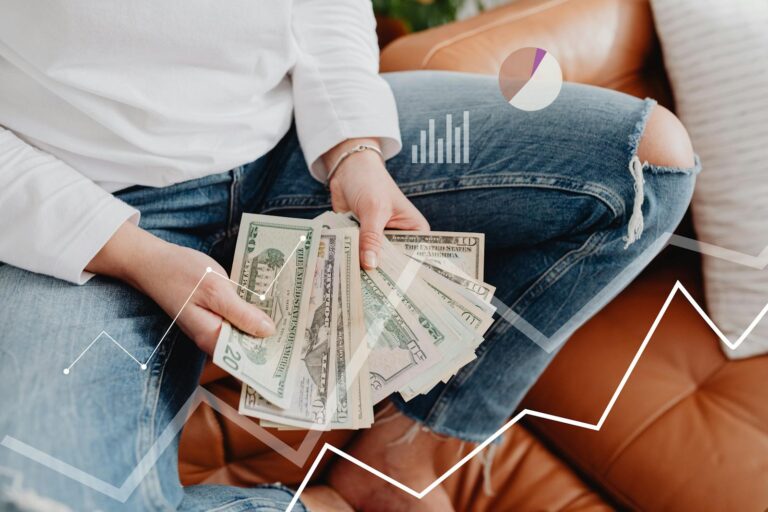You might think making the minimum payment means you’re doing okay. At least you’re not skipping it, right? But here’s the brutal truth: minimum payments are designed to keep you in debt—not get you out of it. It’s a trap, dressed up as a lifeline.
If you’ve been staring at your statement, watching your balance barely budge month after month, you’re not imagining things. That slow progress? It’s on purpose. You’re doing your part, but it feels like treading water with weights on your ankles. You’re not lazy. You’re not irresponsible. You’re playing a game that’s rigged against you—and you’re not alone.
This article is here to pull back the curtain. We’ll break down the history of this system, show you the cold math behind those minimums, and give you real ways to take your power back—without needing to be a finance expert. Let’s get started.
Credit cards didn’t start out as traps—but they quickly became one. In the 1950s, Diners Club introduced the first widely accepted charge card. Then came the big banks. As plastic grew popular, lenders realized something sneaky: they could make more money by not being paid back quickly.
Enter Joseph P. Williams, a banker at Bank of America, who pioneered the first general-use credit card in 1958—what would later become Visa. But here’s where it gets dicey: Williams introduced the concept of revolving credit and minimum payments. Instead of requiring full payment each month, banks allowed users to carry a balance… for a fee. That “minimum due” box? It wasn’t created to help you. It was created to keep you.
It felt manageable. Reasonable. Even generous. But this single feature led millions into decades-long debt spirals, turning everyday purchases into long-term liabilities.
The Numbers Don’t Lie: How Minimum Payments Keep You Stuck
Let’s say you owe $5,000 on a credit card with a 22% interest rate. If your minimum payment is calculated at 2% of your balance, that’s just $100 a month. Sounds doable, right?
Here’s the catch: at that rate, you’ll be paying on that balance for over 30 years. And you’ll end up repaying more than $17,000—for a $5,000 purchase.
Even if you make every payment on time, your progress will be painfully slow. That’s because most of that $100 goes to interest, not your actual debt. In the first few years, less than 20% of your payment touches your principal.
Minimum payments are like treading water while a current pulls you backward. You’re exhausted from trying, but you’re not getting anywhere. The numbers aren’t broken—they’re working exactly as designed.
The Swipe Effect: How Credit Cards Hack Your Brain
There’s a reason why it feels easier to swipe than to spend cash: it is.
When we use cash, the pain centers in our brain light up. We feel the loss immediately. But with credit cards, the emotional sting is dulled. You’re not handing over anything tangible—just tapping a piece of plastic.
Psychologists call this “payment decoupling.” It tricks your brain into thinking you’re not spending as much. That’s why it’s easier to overspend with cards, even for disciplined people.
And companies know this. They count on it. From store credit cards to “buy now, pay later” options, the goal is simple: remove friction, encourage emotion-driven purchases, and keep you coming back.
This isn’t just about convenience. It’s behavioral engineering. And it’s remarkably effective.
Why Even People With Savings Stay Stuck
Now here’s the part that feels extra frustrating. Some people could pay off their cards. They have the money—maybe in a savings account or an emergency fund. But they don’t.
Why? Because of fear. Fear of losing a cushion. Fear of draining the account and not having a backup. So they hold onto savings while their debt racks up interest at 20% or more.
It’s like watching a fire in your living room while refusing to use the water in your bathtub because “what if I need it later?”
In behavioral finance, this is called “mental accounting.” We treat money differently based on where it sits, even if the math doesn’t make sense. It’s more comfortable to keep savings untouched than to confront the discomfort of parting with it—even if it would eliminate hundreds (or thousands) in interest.
The Turning Point: Awareness as the First Breakthrough
The first real shift in escaping this trap? Seeing it clearly.
Most people never do the math. They see a minimum payment of $50 and think, “That’s manageable.” But once they plug their balance into a debt calculator and realize they’re facing decades of payments, something changes.
Debt repayment charts and payoff timelines can be eye-opening. For many, it’s the moment when the fog lifts. It’s not that they’ve been lazy. It’s that the system was quietly working against them the whole time.
This clarity brings power. It reframes that minimum box as a warning sign—not a suggestion.
How to Escape the Minimum Payment Cycle (Even on a Tight Budget)
Okay, deep breath. Now let’s talk about action.
Even if you’re living paycheck to paycheck, there’s hope. You don’t need to double your income to make progress. You just need to stop only doing the minimum.
Start by rounding up. If your minimum is $75, commit to $100. That $25 might seem small, but over time it accelerates your progress dramatically.
If possible, look for “found money” to throw at your balance:
- Tax refunds
- Birthday or holiday cash
- Reimbursement checks
- Garage sale earnings
These windfalls often get spent without a plan. Instead, assign them a mission: shrinking your debt.
You can also automate extra payments. Set a recurring transfer the day after payday so it disappears before you notice it. Out of sight, out of spending reach.
Finally, if you can find even $50/month from cutting subscriptions or dining out less, direct it to your highest-interest card. It’s not about perfection. It’s about momentum.
What Banks Don’t Want You to Know
Credit card companies aren’t rooting for your success. They earn the most money from “revolvers”—people who carry a balance month after month.
Their goal isn’t for you to default. They want you to pay just enough to stay in the game. Minimums ensure a steady stream of interest without triggering a red flag.
When they offer perks like airline miles or cash back, they’re not being generous—they’re baiting traps. If you’re paying 22% in interest, a 1% cashback reward is an insult, not a gift.
You can still use credit cards. But flip the system. Pay them off in full each month. Use their perks without giving them a dime in interest.
That’s when you win the game they designed to keep you losing.
Your New Plan: Simple, Clear, Doable
Here’s how to take back control:
- Pick a strategy: Snowball (smallest balance first) or Avalanche (highest interest first). Or combine them.
- Set a freedom date: Choose a payoff deadline and work backward to calculate how much to pay monthly.
- Use a tracker: Seeing progress visually fuels motivation. Apps like Undebt.it or simple spreadsheets work wonders.
- Build accountability: Tell a friend. Join a community. Check in monthly. Quiet shame keeps people stuck—shared goals set people free.
- Celebrate progress: Paid off one card? Do a happy dance. Hit a milestone? Light a candle. Motivation needs rewards.
Most importantly, remember: you’re not behind. You’re just waking up.
No more minimums. No more illusions. Just honest math, a powerful plan, and the knowledge that you’re finally moving forward—for real this time.
Break Free, For Real This Time
You started this article knowing something wasn’t right. You’ve been making payments faithfully, but watching your balance barely move—like quicksand swallowing your efforts. Maybe you’ve even wondered if you’d ever be free.
Now you know the truth: the system was never built to help you win. It was built to keep you treading water. But now, you’ve got the numbers, the history, and a real strategy. You’ve seen how minimum payments stretch a short-term problem into a decades-long burden—and you’ve learned how to break the cycle.
Picture what it will feel like to send that final payment. To log into your bank account and not see a balance dragging behind you. That future is possible. Not someday—starting now. You’re not stuck. You’re informed. You’re powerful. And you’re already on your way.
You’ve got this.
We’d Love to Hear From You
- What’s one small change you could make this week to put more toward your balance?
Share your story in the comments — your insight might be exactly what someone else needs to keep going.
great article!





Leave a Reply